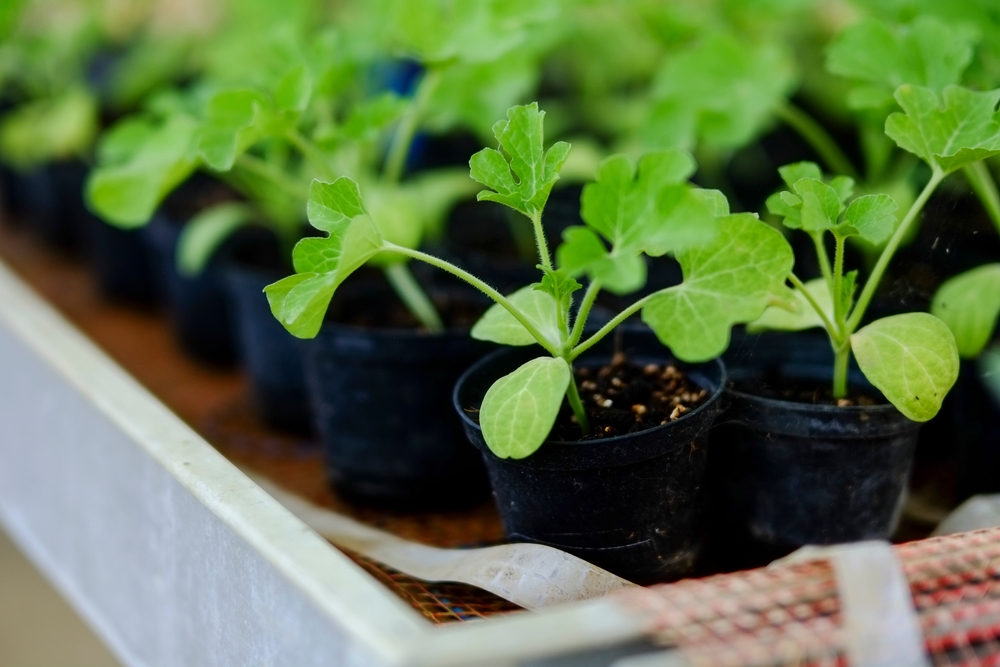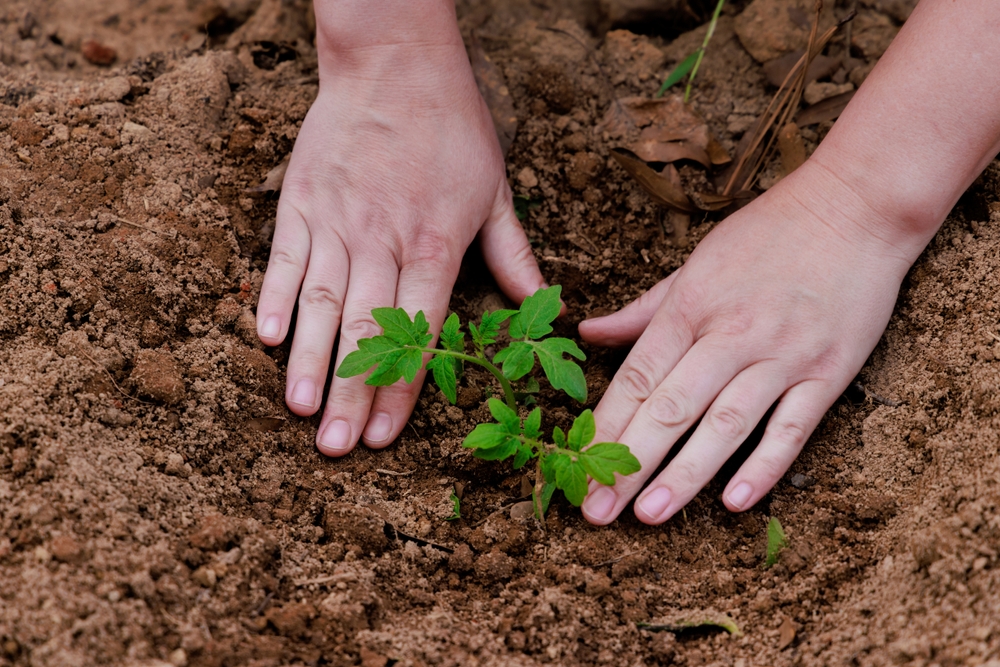
Image Source: Shutterstock.com
There’s something downright magical and special about cool-weather gardening. It comes with crisp air, the earthy smell of damp soil, and the satisfaction of watching tiny green shoots settle into their new homes before the chaos of summer heat kicks in.
While many gardeners pack away their tools when temperatures dip, the smart ones know that early spring and fall are prime time for transplanting certain seedlings. In fact, some plants actually prefer cooler soil and gentle sunshine—it helps them root deeply and grow stronger before the stress of summer arrives.
1. Broccoli: The Chill Champion
Broccoli loves the cool life. Unlike delicate summer vegetables that wilt at the first hint of frost, broccoli practically cheers when temperatures stay between 45°F and 75°F. Transplanting broccoli seedlings in early spring or fall allows them to develop sturdy stems and tight heads without bolting prematurely. The cooler the climate, the sweeter the flavor—literally. A touch of frost before harvest can make your broccoli taste richer and more complex than anything from the store.
2. Cabbage: The Hardy Headliner
If you’ve ever struggled to grow cabbage in the blazing heat, you’re not alone. This leafy powerhouse hates hot weather but absolutely thrives when transplanted in cool conditions. Early spring or late summer transplants give cabbage time to grow those signature crisp, tight heads without battling insects or heat stress. The plants root quickly in cool soil, creating a sturdy foundation before temperatures swing. Plus, cooler temps bring out that subtle sweetness that makes homegrown cabbage taste like an entirely different vegetable.
3. Kale: The Frost-Kissed Favorite
Kale is the vegetable version of that one friend who wears shorts in the snow—it just doesn’t care about the cold. In fact, it thrives on it. Transplant kale seedlings when the air feels brisk, and they’ll reward you with deep green, nutrient-packed leaves that only get tastier as the temperature drops. Cool weather slows growth just enough to concentrate the flavor, giving you that earthy, slightly sweet crunch everyone’s crazy about. If you’ve never tasted frost-touched kale, get ready—it’s the best kind you’ll ever eat.
4. Cauliflower: The Cool-Headed Perfectionist
Cauliflower might have a reputation for being a bit fussy, but give it the right conditions, and it’ll blow your mind. This veggie despises heat but thrives when transplanted during cooler months. The steady temperatures help cauliflower develop those firm, milky-white heads that look like they belong in a farmer’s market photo shoot. Cool weather reduces stress on the plant, minimizing problems like buttoning (when it produces tiny, undeveloped heads). A little patience, a little chill, and you’ll have a cauliflower patch worth bragging about.
5. Spinach: The Speedy Sprinter
Spinach doesn’t waste time—it’s one of the fastest-growing cool-weather greens, making it perfect for transplanting when summers long gone. Drop those seedlings into the soil while it’s still cool, and you’ll see lush, dark leaves forming before you know it. Warm weather makes spinach bolt in a flash, but in cool conditions, it just keeps thriving. Its tender leaves are packed with iron and flavor, perfect for tossing into salads or wilting into soups. The best part? You can often squeeze in multiple spinach crops during spring and fall.
6. Lettuce: The Crisp Cool-Weather Classic
Few things taste fresher than lettuce harvested straight from a cool, dewy garden. Lettuce seedlings absolutely adore cool weather—it keeps them tender, crisp, and flavorful. Transplant them when the days are mild, and you’ll avoid the bitterness that heat brings. The roots settle easily in the cool soil, helping the plants establish quickly and evenly. And since lettuce matures fast, you can enjoy that perfect homegrown crunch long before summer heat becomes an issue.
7. Onions: The Quiet Overachievers
Onions may not be flashy, but they’re smart growers who know how to make the most of cool conditions. Transplanting onion seedlings in early spring or late fall gives them the chance to build strong root systems before the sun gets intense. These roots anchor them through dry spells later in the season, helping produce larger, juicier bulbs. Cool weather also helps keep pests at bay—nobody likes onion maggots ruining the fun. When harvested, your onions will be firm, flavorful, and ready to transform every meal.
8. Peas: The Happy Early Birds
Peas might just be the friendliest cool-weather crop around. They love being transplanted early, before the soil has a chance to warm up too much. In fact, the chill helps peas develop stronger vines and sweeter pods. Heat is their worst enemy, causing plants to wilt or stop producing, so getting them in early gives you an edge. When you bite into those crisp, sweet pods straight from the garden, you’ll understand why cool weather is the secret ingredient to perfect peas.

Image Source: Shutterstock.com
Cool Weather with Hot Results
Cool-weather transplanting isn’t just a garden hack—it’s a game-changer. When you plant the right seedlings at the right time, you’re setting yourself up for stronger growth, fewer pests, and better flavor. There’s something deeply satisfying about watching your cool-season garden thrive while others wait for spring to “warm up.”
So next time the temperature drops, and the air smells like rain and opportunity, grab your trowel and get planting. Have you tried transplanting any of these cool-weather champions? Let us hear them below in our comments section!
You May Also Like…
7 Flowers That Self-Seed and Return Next Spring
Why Garden Nets Stop More Than Pests in Fall
Why Root Pruning Is Easier in Cooler Weather
10 Cold-Hardy Veggies That Thrive When Everyone Else Gives Up
How Soil Microbes Shift With Cooler Weather
Leave a Reply